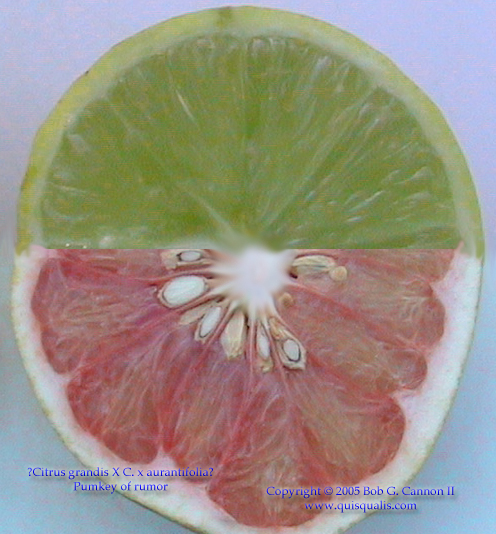I found this quite interesting and worthy of sharing, though I don't know of a practical application for it.
Here is the original post from a Yahoo group focusing on Tropical and Subtropical fruits:
| Quote: |
Fruit Grafting
For the last decade I have been experimenting with grafting fruit. Young
fruit, not plants. Recent success leads me to make my experiments public
in the hope that others will follow the process.
When young the cells of fruit are in a state of rapid growth and
differentiation. Parenchyma and Collenchyma tissues are especially
adaptive at this time; with special care they cannot only form
successful interfamily grafts but unique fruit as well. The technique
appears to work with many species although experimental subjects have
been limited to what is available in Florida, USA. Further
experimentation needs to be done in the tropics with additional species.
Success is greatest where the general structures of the fruits to be
grafted are most similar (i.e.: Podocarpus + cashew) in some instances
greatly dissimilar fruit can be grafted by the insertion of a thin
interlayer of a species compatible with both. (Apple + pear inter layer
+ peach). Mature size can also have an effect, although mature size
appears to be controlled by the parent or root fruit in most cases.
The Technique
Both donor and root fruit need to be young and in active rapid development.
The root plant (the plant you graft onto) needs to be healthy and in growth.
Most grafts are most successful if the fruits to be grafted are cut
along their equator.
Match the size of the two as closely as possible.
Secure firmly with Parafilm. Due to the rapid growth of most fruit
plastic tape will cause deformities or misalignment to occur.
We use a citrus as an example as they are relatively common and
successful. The major difficulty is in finding fruit young enough to
match in size when working with grapefruit and the smaller species.
Using a pummelo just as the petals detached from the fruit cut it in
half at the equator. (Our photo shows one that was cut from top to
bottom, which can be much harder to do successfully but can produce a
more impressive effect). Cut a young orange or lime in the same manner
chosen so that its size matches the pummelo. Align the two and seal
together with Parafilm; you can use a couple of small sterile thorns to
help hold the pieces together if necessary. Your Parafilm seal needs to
be 2 - 3 layers thick and stretched tight so that water and insects are
excluded. Wrap upwards so that water is shed from the seams and use your
finger to help all edges to adhere.
Over the next weeks a successful fruit graft will continue to grow and
many will split the Parafilm. It is not necessary to replace the
Parafilm if it splits or falls away. I have noticed that scale insects
are attracted to the seam between the two fruits and this area must be
watched and scale removed if they begin to infest the fruit. Bagging
helps greatly as it affords the growing fruit with protection.
Ripeness appears to be governed by the root fruit with both halves
becoming ripe at the same time.
Seeds of large seeded species can be removed when grafting with no ill
effect on fruit development increasing the grafts success. It is almost
always advisable to remove damages seeds from the donor fruit.
I am pleased that both the Soylent Corporation (Green Division) and
Intergalactic Spice and Trading have helped fund my research.
If the attached image is missing it can be seen at:
http://www.quisqualis.com/tv06content.html
Best of growing,
Bob
SW Florida USA
If any of you decide to pursue this please keep me informed and remember
the following:
Root Fruit, RootFruit, Parafilm, Donor Fruit, DonorFruit are
trademarked.
The technique is Cannon Fruit Grafting and must bear the TM if used. |
 [/img]
[/img] 












 [/img]
[/img] 